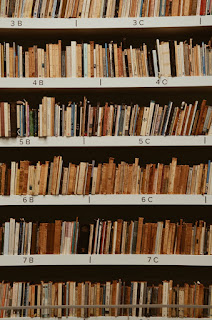Kay Harker and Cole Hawlings Picture accessed via BBC There are few things more Christmassy than the opening few bars of the theme tune to The Box of Delights . In fact, the tune is based on Victor Hely-Hutchinson's Carol Symphony and had been used in radio adaptations of the same novel years earlier than the 1984 television series. Clearly, everyone already knew that you just couldn't improve on that sound to evoke the magic of Christmas which - for me and for many - is so wonderfully explored in John Masefield's story. As a viewer, one of the things I enjoy most about the television series of The Box of Delights is the acting. Child actors are precarious things: too sweet and they're almost unbearable to watch, not sweet enough and they're unbelievable. They must walk that fine line between the two, and it is a perilous one! Most young actors fall into the first category, where their on-screen presence is almost dangerously saccharine. Not so the child actors ...
Tuesday 26th November - Categorising and Genres
It's important for readers and writers to understand a little bit about genres. It means that a writer can tailor their work to readers, and it means that a reader can have a good guess of whether they'll enjoy a certain book.
There are certain tropes that people expect from certain genres, so make sure you know what they are before categorising your book. For example, if you're writing Romance then you need to make sure that the couple get together at the end of the book. Oh, and they've got to have some troubles along the way too, of course!
By all means, kick back against the trend and defy stereotypes, but if you don't stick to certain tropes then you may end up with disgruntled readers.
Important Notes
I have recently been teaching my class of P4/5 about different genres, and it has really helped me peel back the genres to the bare bones. This is how I described some of the main genres to the kids:
 |
| Books have, and always will be, categorised into types. It helps writers and readers succeed. |
It's important for readers and writers to understand a little bit about genres. It means that a writer can tailor their work to readers, and it means that a reader can have a good guess of whether they'll enjoy a certain book.
There are certain tropes that people expect from certain genres, so make sure you know what they are before categorising your book. For example, if you're writing Romance then you need to make sure that the couple get together at the end of the book. Oh, and they've got to have some troubles along the way too, of course!
By all means, kick back against the trend and defy stereotypes, but if you don't stick to certain tropes then you may end up with disgruntled readers.
Important Notes
- A book can be more than one genres. I categorise Taking Wing as Fantasy Adventure, therefore combining the genres of Fantasy and Adventure.
- Middle grade, young adult or new adult are not genres. They're age categories. There are still different genres inside these categories.
I have recently been teaching my class of P4/5 about different genres, and it has really helped me peel back the genres to the bare bones. This is how I described some of the main genres to the kids:
- Fantasy is something that cannot happen
- Science Fiction is something that cannot happen...yet
- Comedy is a funny story
- Adventure is an exciting story, often involving a quest
- Horror is a story that's designed to be scary
- Fairytale is a magical story, often with a happily-ever-after ending
- Romance is a story about a couple with a happily-ever-after ending
Of course, this is only a smallish list of a few genres. The literary world is full of fascinating genres.
Comments
Post a Comment